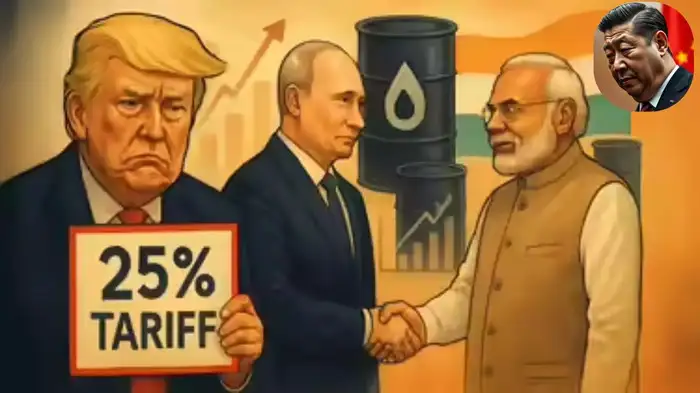New Delhi, August 4 – Former U.S. President Donald Trump’s recent warnings to India over its trade with Russia and potential imposition of steep tariffs have sparked sharp reactions in New Delhi and beyond. In what appears to be a strong show of strategic autonomy, India has not only refused to bow to Washington’s pressure but has doubled down on its sovereign trade decisions — signaling a shift in global power dynamics.
In his latest remarks, Trump suggested imposing 25% tariffs on Indian goods and threatened additional penalties for India’s continued energy imports from Russia. However, Prime Minister Narendra Modi has seemingly brushed off the rhetoric, instead urging Indian citizens to support local products and bolster the “Make in India” movement, reinforcing a self-reliant economic agenda.
India Defies Pressure, Continues Russian Oil Imports
Despite U.S. objections, India has remained one of the largest buyers of Russian seaborne crude oil, maintaining stable energy ties with Moscow even amid global tensions. The Modi government has made it clear that its foreign policy is independent and interest-driven, not reactive to Western demands.
The U.S. administration faced an unexpected setback when China openly backed India’s stance, praising New Delhi’s independent foreign policy — a move that surprised many observers given the historically strained relationship between the two Asian powers.
China’s Support for India Shifts the Strategic Balance
Beijing’s endorsement of India’s strategic autonomy has added a new layer of complexity for the United States. Already Russia’s key diplomatic and economic partner, China’s control over critical rare-earth materials—essential for U.S. tech manufacturing—limits the effectiveness of American pressure.
Despite ongoing efforts to reset U.S.-China relations, the geopolitical landscape remains tense. Earlier this year, both countries increased tariffs on each other’s goods by over 100%, although behind-the-scenes talks for de-escalation have continued.
Russia-India-China Triangle Challenges U.S. Dominance
The growing alignment between Russia, India, and China is increasingly posing a challenge to U.S. influence. While Trump initially tried to corner China with trade threats and pressured Russia over the war in Ukraine, neither strategy yielded tangible results. His latest attempt to strong-arm India appears to be faltering as well.
This trilateral understanding among Moscow, New Delhi, and Beijing signals a multipolar world where U.S. unilateralism is increasingly being contested.
India’s Deepening Trust in Russia Remains Unshaken
India continues to maintain strong ties with Russia — a relationship rooted in Cold War-era cooperation, particularly in defense. The Indian Ministry of External Affairs recently reaffirmed this, with spokesperson Randhir Jaiswal calling the partnership “stable and time-tested.” He emphasized that India’s bilateral relationships are formed independently and should not be judged through the lens of third countries.
Jaiswal also reiterated that India’s approach to international diplomacy remains constructive and consistent, including its ongoing dialogue with the United States.
Trump’s Focus Shifts to India Over Ukraine Standoff
Trump’s criticism of India comes at a time when he is trying to apply indirect pressure on Russian President Vladimir Putin regarding the ongoing conflict in Ukraine. India’s continued participation in BRICS and its strong energy partnership with Russia appear to have drawn Trump’s ire. However, New Delhi’s refusal to be swayed underscores a growing confidence in charting its own course on the global stage.
As India balances its global partnerships with assertiveness and pragmatism, it’s clear that the days of unchallenged U.S. dominance in shaping the foreign policy of emerging economies are coming to an end.


